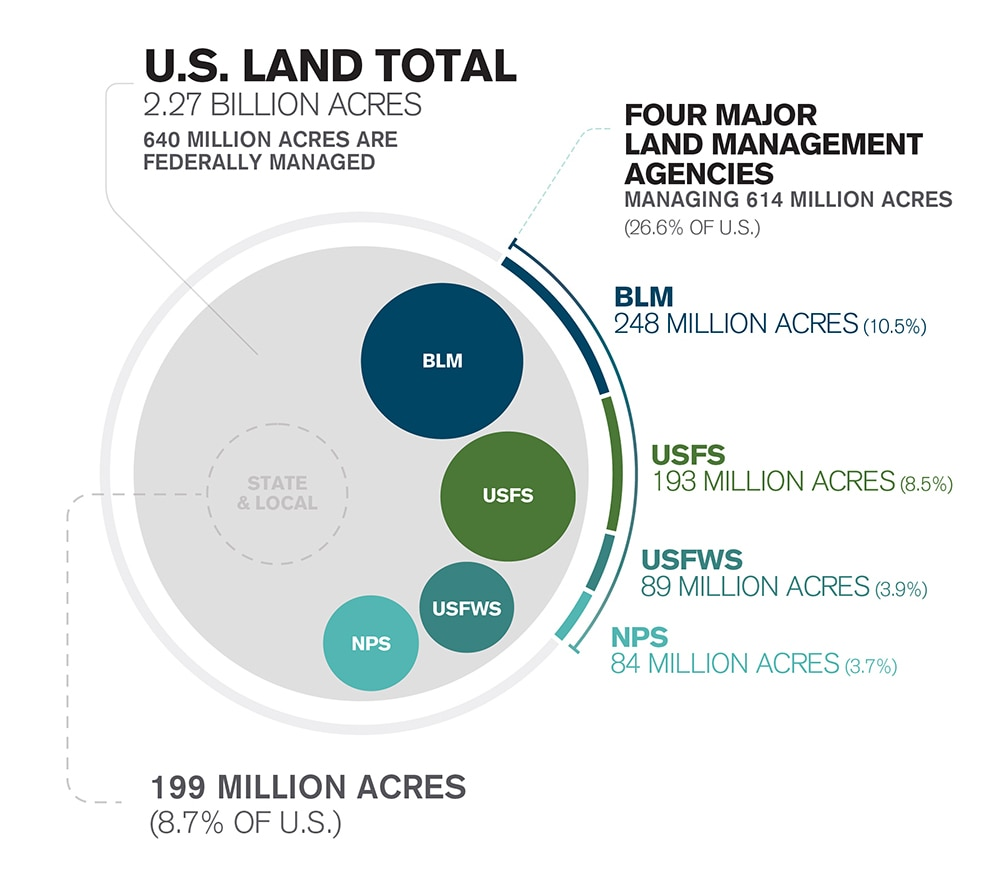Compulsive use of a substance known by the user to be harmful
Tierras publicas
Many Americans experience the joy and recreation of public lands without ever knowing they’re public lands. Public lands are spaces of land owned and funded by the government but belong to the American people. Common federally funded lands are national parks, wildlife refuges, national forests, and monuments.
Though labeled as ‘public lands,’ some lands house privatized sections for agriculture or conservation. Often, private lands are donated or left in wills to the public to see a space preserved for future generations.
Public lands are federally funded, though they sometimes receive small donations to help with projects and the upkeep of the area. The Bureau of Land Management manages lands from the U.S Department of the Interior. Thanks to the 1976 Federal Land Policy and Management Act, public lands remain protected under the regulatory system for past and future generations.
There are three types of public lands: federal public, state public, and local public. Your local city park has the same protection as a national park like Yellowstone. Each public land has a different use, ranging from conservation to resource extraction. Citizens can have some say in public land use on a federal level, but state and local lands don’t always need citizen involvement.
Yellowstone was founded in 1872 as the first national park, though Yosemite Valley was labeled as a public park in early 1864. To date, the National Park System has over 423 sites within the U.S, with 63 of them labeled as national parks. Here is a quick breakdown of sites, acreage, and who manages public lands.

Image Source: https://www.outdooralliance.org/
What Voters Should Know About Public Lands
During the recent 2018 federal government shutdown, public lands were shut down for almost a month. They received no funding or staff management for nearly a month at the sites, though the public still flocked to the locations. National parks specifically suffered during this period. They suffered overflowing trash bins, unsanitary environments, and even damage to the parks.
Public lands spent months cleaning up the damage after the shutdown. It’s easy to forget their reliance on federal funding, but public lands can quickly deteriorate without it. With political issues of climate change on the rise, the pristine preservation of these lands is at the forefront of many nature lovers’ minds.
Some states have recently moved to increase public land area protection and funding to prevent the deterioration of sites. This includes California’s 2022 PUBLIC Lands Act. The act seeks to protect over a million acres of land and 500 miles of streams and rivers in California. This coincides with the state’s work to protect 30% of its waterways and lands by 2030.
When voting, you can make your voice heard on the use and protection of public lands on all levels. Representatives labeled as conservationists emphasize public lands and environmental protection. On state and local levels, have your voice heard by contacting city councils. You can participate in community votes and petition for your area’s cleanup and restoration efforts.
Gather friends to volunteer at public lands. Join public groups dedicated to park cleaning. Most national and local parks always look for volunteers to help with the land. Search public lands in your area to find the best way to support the sites you care about.
